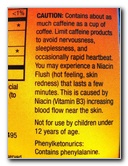The abomination of pigs in Jewish and Islamic culture is an ancient and deeply entrenched tradition. In this article by Marvin, he explores the possible reasons for the traditional aversion of pork within these communities. He begins by stating some of the main arguments used to explain making the abstinence from pork-eating a law – Firstly, they eat and wallow in filth and secondly, their meat carries diseases. He explains why they don’t make much sense because when there is a need, other domestic animals (cattle, sheep and goat) do eat feces, and all undercooked meats carry the potential for spreading disease.
Harris then points out that the trouble with the pig is- it is not a grass-eating ruminant. According to Leviticus 11, “Whatever parts the hoof and is cloven footed and chews the cud among animals, you may eat.” By this way he claims that there is no such distinction as clean and unclean. Pigs are not allowed because they satisfy only one part of the formula i.e. they have hoof but do not satisfy the other part of the formula i.e. they don’t chew cud.
In his view, the proscription against pork is founded on a rational grasp of ecology and of the food chain, as well as a gently Darwinian approach to the necessities of supply and demand. Within the overall pattern of a mixed farming and pastoral complex, the divine prohibition against consuming pork constituted a “sound ecological strategy”. He traces this rationale to the fact that in the increasingly arid Middle East, the pig's fondness for shady, wooded spots as opposed to open grasslands became harder to satisfy. Most of all pigs are thermodynamically ill adapted to hot, dry and arid climate due to its inability to sweat and lack of protective hair. Also, its insistence on being fed grains meant that it was competing with its human owners for their daily bread. Ruminants are the domestic animals best adapted to arid plains and hills. Cattle, sheep and goats unlike pigs, gave milk, butter, and cheese, and grazed on vegetable matter that humans weren't interested in consuming (like grass). As compared to pigs it is not difficult to herd them over long distances.
Being raised as a Muslim I found this article intriguing as it exposed me to a different perspective. The author has put an interesting argument about why pork is prohibited by exploring various economic aspects. However I strongly disagree with him at certain points. Firstly Harris points out that divine prohibition is related to economic reasons. I believe that economic issues were not a prime concern at that period of time. Also, Harris himself has stated that pigs were not often consumed by the population. So why would it call for divine prohibition? Secondly, this prohibition was imposed for every Muslim irrespective of the economic wellbeing of an individual and of the availability of this animal, so there seems no remote reason for a prohibition of a certain food based on economic standpoint.
In Islam, Quran is the word of GOD, and through this medium GOD has prohibited swine and along with it many other food and activities. And much of it mentioned without detailed explanation for which only “GOD knows best”. Although, over centuries of research and understanding that we have being able to provide credible evidence to support such prohibition. Some that I may list would be:
· Pigs do not sweat as a result most of the uric acid gets absorbed into their body.
· Pork contains many germs and parasites like tape worm, round worms. .
This proves that the more science advances the more Islam is shown correct as a religion of God Thus the religion has laid down this prohibition for reasons yet to be well understood by humans. One assured reason being this prohibition has more good than harm for the self being.



